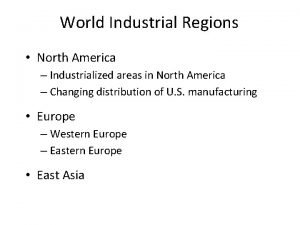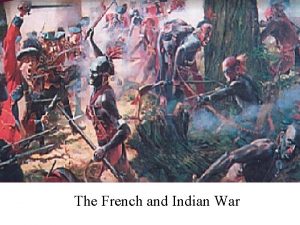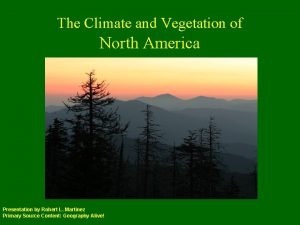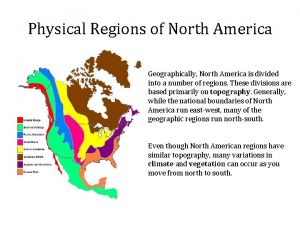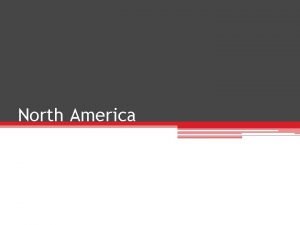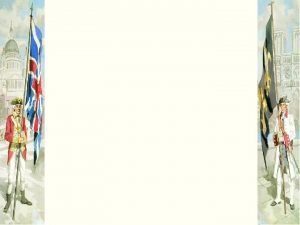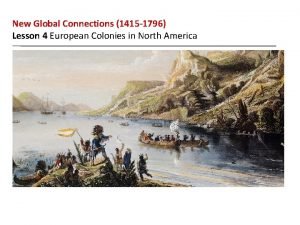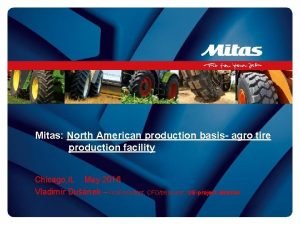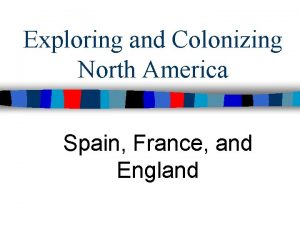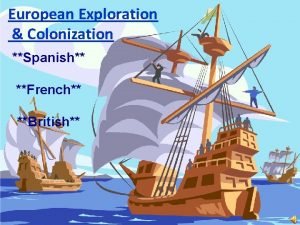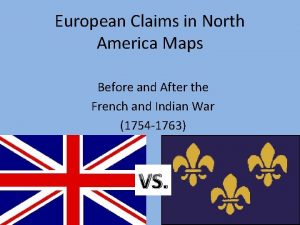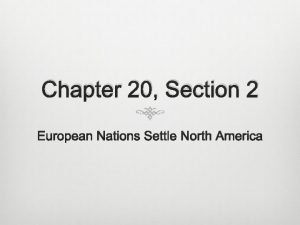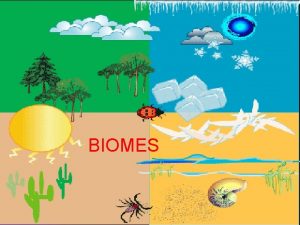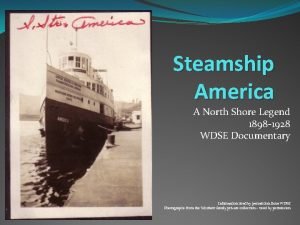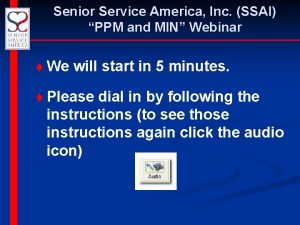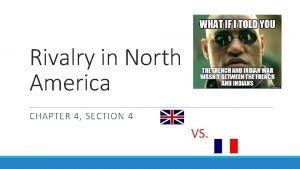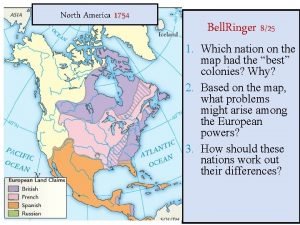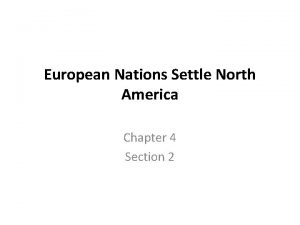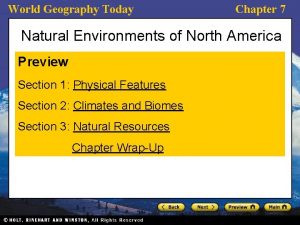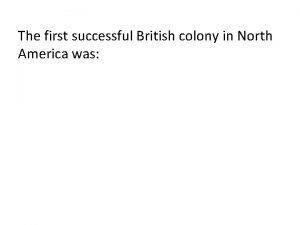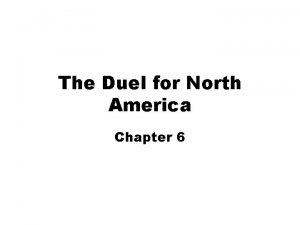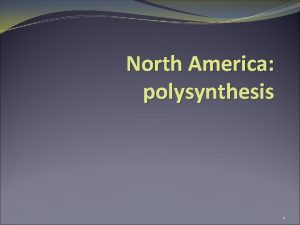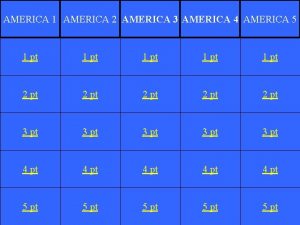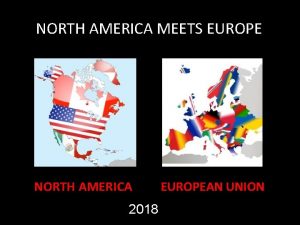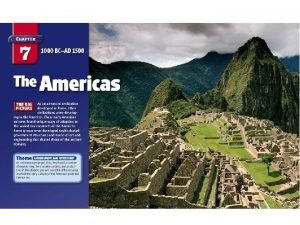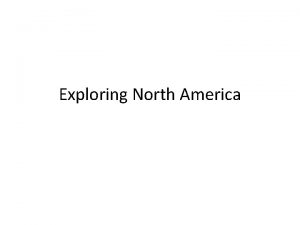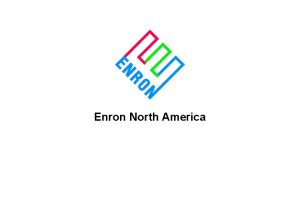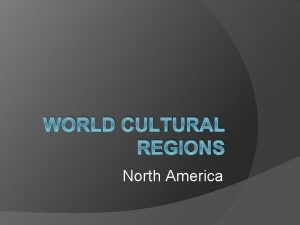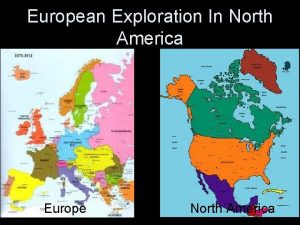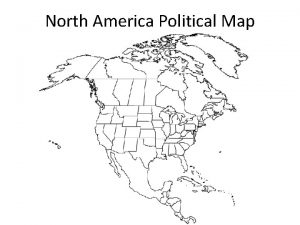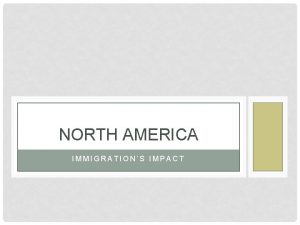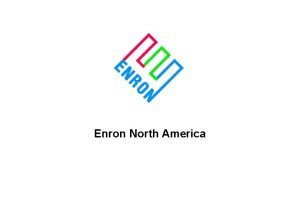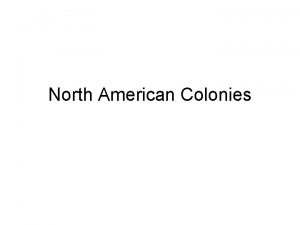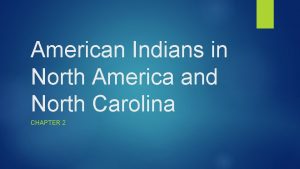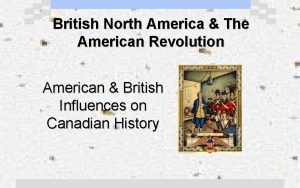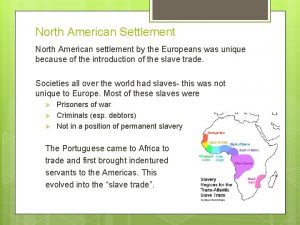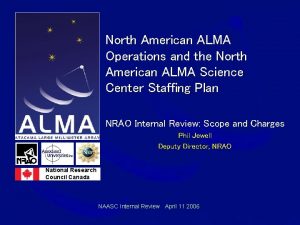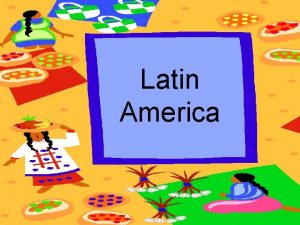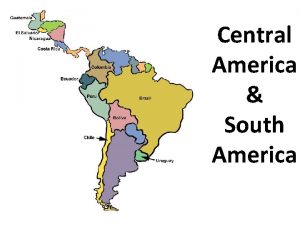Unit 2 North America What do North American



































- Slides: 35

Unit 2: North America

What do North American countries have in common? How are they different? Similarities Physical Geography – landscape & climate History Economies Daily Life – Housing, Clothing, Music, Sports, Language, Gov’t Differences

Chapter 4 -5: The United States

Chapter 4 and 5, Lesson 1 Physical Geography of the United States

The United States ranks: By area - 4 th largest country in the world 48 contiguous states + Alaska & Hawaii Contiguous – joined together

Physical Regions of the US Coastal Plains Appalachian Mtns Interior Plains Mtns & Plateaus Pacific Coast Alaska Hawaii

The Coastal Plains Atlantic Coastal Plain (East) Excellent harbors for shipping Megalopolis – continuous cities & suburbs • Boston, New York, Philadelphia, Baltimore, Washington, D. C. Gulf Coastal Plain (Southeast) Good farmland Houston & New Orleans

The Appalachian Mountains

The Appalachian Mountains Low eastern mountain range Fertile soil in the foothills Logging & coal-mining

Interior Plains Central Lowlands (east of Mississippi R. ) Grassy hills, rolling flatlands, thick forests Good farmland Great Lakes & St. Lawrence Seaway connect the region to the Atlantic Ocean Great Plains (west of Mississippi R. ) Farming & ranching area

Mountains & Plateaus (Interior West) Rocky Mountains Continental divide Grand Canyon

Pacific Coast Mountains Cascade (north) Sierra Nevada (south) Fertile valleys Raise fruits & vegetables

Hawaii 128+ volcanic islands Coral reefs – skeletons of small sea animals build up around an island

Alaska Mountains! Denali (formerly Mt. Mc. Kinley) – tallest mountain in North Amer. Close to Russia Borders on the Arctic Ocean


Chapter 4 and 5, Lesson 2 History of the United States

America’s 1 st Immigrants: 15, 000 years ago, people migrated from Asia & created distinct ways of life

A Brief History of the US : 1500 -1800 1500 s – Europeans arrived to explore 1600 s – Colonization by Great Britain (East), Spain (West), France (Central)

A Brief History of the US : 1500 -1800 1775 -83 – American Revolution British colonists fought to form their own country Set up a representative democracy with a constitution guaranteeing personal freedom

A Brief History of the US: 1800 s Growth in land area & population, Civil & Indian wars & industrialization Louisiana Purchase from France • White Americans explored the west • Manifest Destiny: belief that the United States had the right to extend its boundaries to the Pacific

A Brief History of the US: 1800 s Growth in land area & population, Civil & Indian wars & industrialization Gold discoveries and free land on the Great Plains encouraged immigration and settlement of the West • The US government and white settlers pushed Native Americans from their traditional lands onto reservations

A Brief History of the US: 1800 s Growth in land area & population, Civil & Indian wars & industrialization Civil War – resulted in the abolition of slavery Industrialization - many people relocated from the South to the North to work in the new industries

A Brief History of the US: 1900 s World power status after World War I & II Urbanization: Great Depression (1930 s) forced small farmers to cities to find work and WWII (1940 s) pulled many people to cities along the coasts to work in factories for war supplies.

A Brief History of the US: 1900 s World power status after World War I & II Growth: Alaska & Hawaii statehood in 1959. Economic Growth: Industrial boom after WWII, Computer tech boom in 1980 s-2000 s

A Brief History of the US: 2000 s War on Terror and Globalization 9/11 terrorist attack Great Recession – economic downturn in 2008

Chapter 4 and 5, Lesson 3 The United States Economy & Culture

The United States ranks: By wealth – 1 or 2 nd in the world based on Gross Domestic Product (GDP) Depending on how you calculate, US or China is #1

The Free Enterprise System We have the freedom to start our own businesses and keep the profits (after taxes)

United States: The Economy Service industries – largest part of economy! Provides services instead of goods Plentiful natural resources help industry Coal, copper, oil, iron, gold, silver, lead Farm products are exported more than any other country, but only 2% of our GDP Beef, pork, lamb, corn, wheat

The United States Economy Region East of the Mississippi River (Pg. 132 -139) West of the Mississippi River (Pg 164171) Major Cities Major Economic Activities (industries) Agricultural Products & Natural Resources

Current Economic Issues in the US Use of fossil fuels Causes air & water pollution (acid rain) Dangerous extraction methods (fracking) Garbage – our landfills are filling up Reduce, Reuse, Recycle! Technology important strength for our economy, so get educated! World trade free trade – no trade barriers between countries

Tourist Destinations - 2003

The United States ranks: By population – 3 rd largest country in the world

America’s People US population: 328 million Today, immigrants make up most of North America’s population Diverse ethnic groups, religions

Life in the US High standard of living Most people live in urban areas Language: mostly English Religion: mostly Christian, but also Judaism, Islam, Buddhism, Hinduism, Mormon
 North america south america europe asia
North america south america europe asia Rap of the map of the us
Rap of the map of the us Repetition in let america be america again
Repetition in let america be america again Why is it called latin america
Why is it called latin america Happening body art
Happening body art First people in the world
First people in the world World's industrial regions map
World's industrial regions map Air masses in north america
Air masses in north america Map of north america 1754
Map of north america 1754 Climate and vegetation of north america
Climate and vegetation of north america 8 physical regions of north america
8 physical regions of north america Ottawa in north america map
Ottawa in north america map Aztec empire on a map
Aztec empire on a map North canada provinces
North canada provinces North america map 1750
North america map 1750 European colonies in north america
European colonies in north america Mitas tires north america inc
Mitas tires north america inc When did britain colonize america
When did britain colonize america New exploration
New exploration European land claims in north america map
European land claims in north america map European nations settle north america chapter 20 section 2
European nations settle north america chapter 20 section 2 Native american cultural areas
Native american cultural areas What are biomes?
What are biomes? Lake effect side
Lake effect side Air masses and fronts
Air masses and fronts Icpc programming contest problems
Icpc programming contest problems Steamship america a north shore legend
Steamship america a north shore legend Senior service america inc
Senior service america inc Chapter 4 lesson 4 rivalry in north america
Chapter 4 lesson 4 rivalry in north america North america 1754 map
North america 1754 map Chapter 20 section 2 european nations settle north america
Chapter 20 section 2 european nations settle north america North america costume
North america costume Chapter 7 natural environments of north america
Chapter 7 natural environments of north america The first successful british colony in north america
The first successful british colony in north america Chapter 6 the duel for north america
Chapter 6 the duel for north america Apush chapter 6
Apush chapter 6






